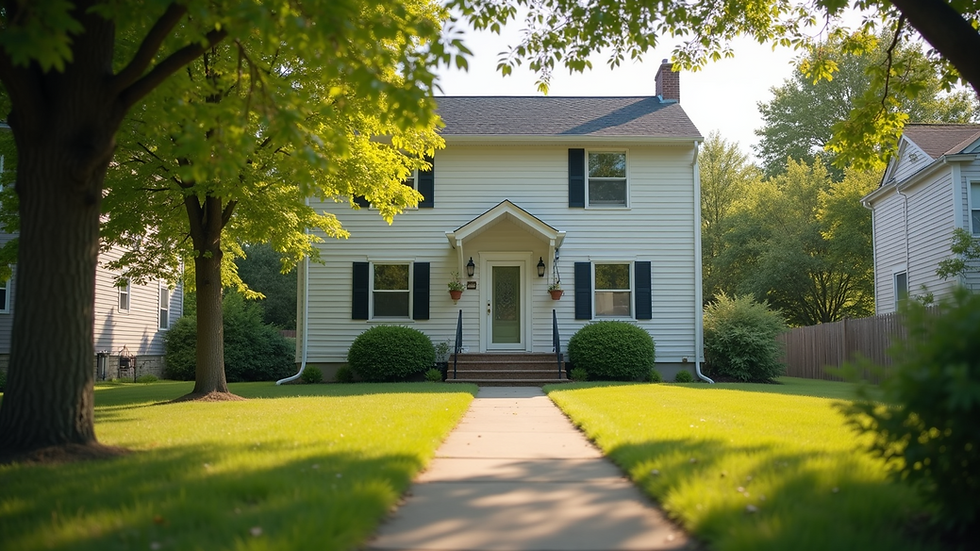Top 5 Lease Clauses That Can Save You Thousands in Disputes
- domodomu
- May 14
- 3 min read
Navigating the world of leasing can feel overwhelming, whether you are a tenant or a landlord. Without clear terms, misunderstandings can lead to costly disputes and endless frustrations. A thoughtfully crafted lease agreement serves as a shield, protecting both parties from potential pitfalls. In this post, we will highlight the five essential lease clauses that can help you avoid disputes and save you money, fostering healthier landlord-tenant relationships.
1. Security Deposit Clause
The security deposit clause is a cornerstone of any lease agreement. It clearly outlines the amount of the deposit, the conditions for withholding it, and when it will be returned after the lease ends.
An effective security deposit clause should explicitly state:
Deposit Amount: Specify the exact sum (often equal to one month’s rent).
Deductions: Detail the conditions under which deductions can be made, such as repairs for damages beyond normal wear and tear.
Return Timeline: Include a timeline for returning the deposit, which is typically within 30 days in many jurisdictions, but can vary.
For instance, if a landlord withholds part of the deposit without clear justification, it may lead to disputes and complicate the return process. By clearly specifying these terms, both parties can avoid misunderstandings, leading to a smoother transition when the lease ends.
2. Maintenance and Repairs Clause
A maintenance and repairs clause defines the responsibilities of both tenant and landlord regarding property upkeep. This minimizes the risks associated with property neglect.
Key elements of this clause could include:
Landlord Responsibilities: Outline tasks like plumbing repairs and roof maintenance.
Tenant Responsibilities: Specify expectations for regular cleanliness, landscaping, and minor upkeep.
Repair Request Procedures: Provide clear steps for how maintenance issues are reported and handled.
For example, if a tenant experiences a plumbing issue, they should know whom to contact and what the expected response time is. Clear responsibilities prevent minor issues from becoming major disputes, ensuring the property remains in good condition.
3. Termination Clause
The termination clause details how and under what circumstances either party can end the lease before the agreed expiration date. This clause is vital for preventing disputes related to lease early termination.
A thorough termination clause should include:
Notice Period: Landlords and tenants should agree on a notice period (commonly 30 to 60 days). This allows both parties to plan accordingly.
Conditions for Early Termination: Outline factors such as failure to pay rent or breach of contract that could lead to early termination.
Consequences: Include details about penalties, such as loss of the security deposit or additional fees.
With clear guidelines, both parties know what to expect. This reduces the chances of disputes popping up if someone needs to terminate the lease earlier than planned.
4. Use of Premises Clause
In commercial leases, the use of premises clause details how the property can be utilized. By being specific about permitted uses, disputes over inappropriate activities can be avoided.
An effective use of premises clause should cover:
Permitted Uses: Clearly articulate what activities are allowed, such as retail, office, or residential; this sets expectations for tenants.
Restrictions: Specify activities that are prohibited, such as illegal actions or unauthorized subletting.
Alteration Guidelines: Outline any rules regarding modifications to the property.
For example, a café tenant might be prohibited from hosting late-night events to avoid disturbing neighbors. Clear parameters help both parties navigate potential issues seamlessly.
5. Dispute Resolution Clause
Having a well-structured dispute resolution clause can help tenants and landlords avoid lengthy and costly legal battles. This clause outlines how disagreements should be handled without going to court.
A practical dispute resolution clause typically includes:
Initial Negotiation Requirements: Encourage open communication as a first step if a dispute arises.
Mediation or Arbitration Provisions: Facilitate these processes before legal actions escalate, which can save time and money.
Timelines: Set clear deadlines for each step of the process.
For example, both parties might agree to resolve issues through mediation within 30 days of a conflict arising. This proactive approach not only saves costs but also fosters a healthier relationship between landlords and tenants.
Wrap-Up
Well-drafted lease agreements are indispensable in reducing conflicts and saving considerable amounts of money for both landlords and tenants. By incorporating distinct security deposit, maintenance and repairs, termination, use of premises, and dispute resolution clauses, you benefit from clarity and fairness in the leasing process.
Investing time in understanding these clauses not only fortifies the landlord-tenant relationship but also minimizes the risk of disputes that could lead to expensive legal actions. In the dynamic world of leasing, knowing your rights and obligations can make all the difference in your experience.




Comments